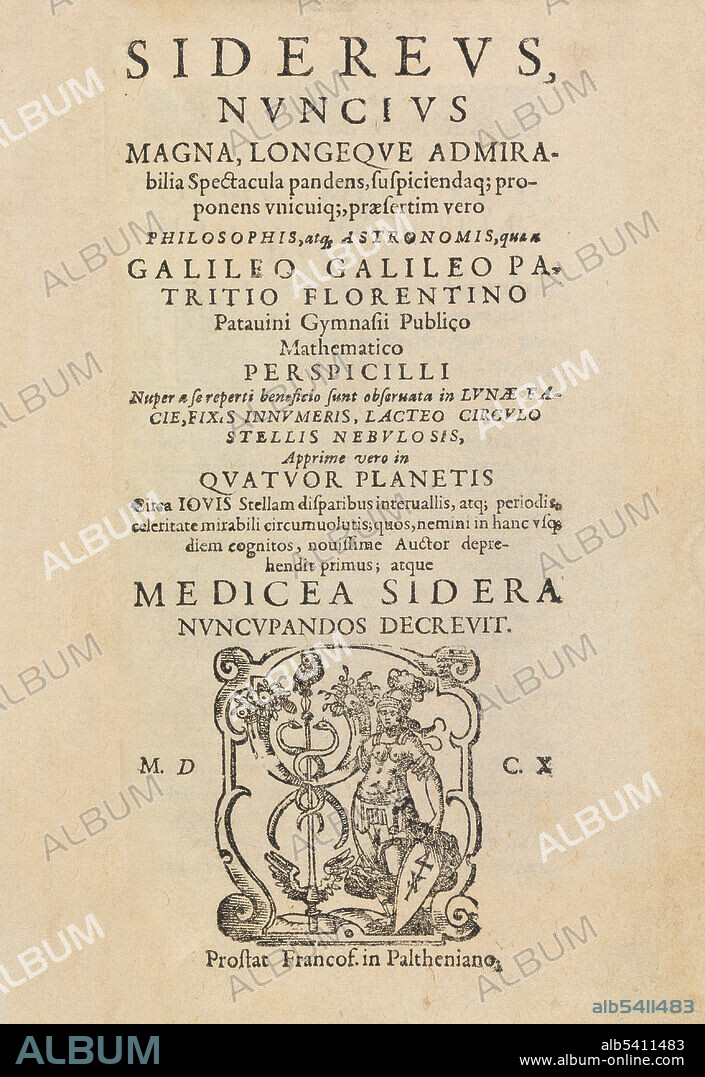alb5411483
Galileo Galilei, Sidereus Nuncius, Title Page,1610

|
Add to another lightbox |
|
Add to another lightbox |



Buy this image.
Select the use:

Title:
Galileo Galilei, Sidereus Nuncius, Title Page,1610
Caption:
Sidereus Nuncius is a short astronomical treatise (or pamphlet) published in New Latin by Galileo in 1610. It was the first published scientific work based on observations made through a telescope, and it contains the results of Galileo's early observations of the Moon, the hundreds of stars that were unable to be seen in either the Milky Way or certain constellations with the naked eye, and the Medicean Stars that appeared to be circling Jupiter. Galileo Galilei (February 15, 1564 - January 8, 1642) was an Italian physicist, mathematician, astronomer, and philosopher who played a major role in the Scientific Revolution. His achievements include improvements to the telescope, important astronomical observations and support for Copernicanism. He discovered the mountains on the Moon, the four largest moons of Jupiter and numerous dim stars. He studied the motion of a pendulum and found that the swings have a constant time period. He studied gravity, showing that heavy and light objects fall at the same rate. He supported the Copernican theory that the Sun was at the center of the solar system rather than the Earth. This belief was judged heretical by the Inquisition in 1633 and he was sentenced to house arrest for the rest of his life. Suffering fever and heart palpitations, he died in 1642, at the age of 77.
Credit:
Album / Science Source
Releases:
Model: No - Property: No
Rights questions?
Rights questions?
Image size:
3097 x 4500 px | 39.9 MB
Print size:
26.2 x 38.1 cm | 10.3 x 15.0 in (300 dpi)
Keywords:
1610 • 1610S • 17TH CENTURY • ART • ASTRONOMIA • ASTRONOMY • BW • CELEBRITIES • CELEBRITY • FAMOUS PEOPLE • FAMOUS • GALILEI • GALILEI, GALILEO • GALILEO GALILEI • GALILEO • HISTORY • OBSERVATIONAL ASTRONOMY • PAMPHLET • RENOWNED • SCIENTIFIC REVOLUTION • SCIENTIST GALILEI • SIDEREAL MESSAGE • SIDEREAL MESSENGER • SIDEREUS NUNCIUS • SKETCH • STARRY MESSENGER • TELESCOPE OBSERVATIONS • TELESCOPIC OBSERVATIONS • TITLE PAGE • TREATISE
 Pinterest
Pinterest Twitter
Twitter Facebook
Facebook Copy link
Copy link Email
Email
